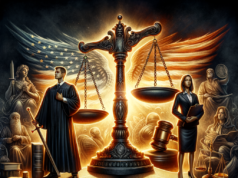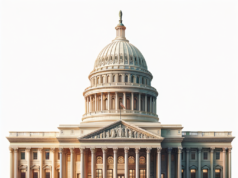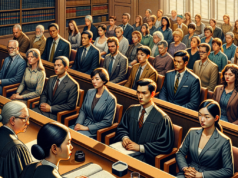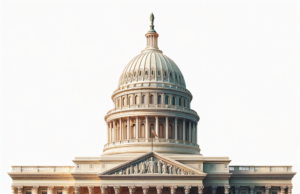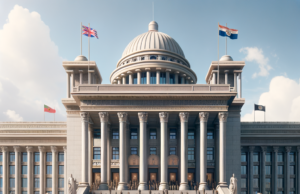Contents
- 1 Understanding the Historical Context of School Shootings in the United States
- 2 Analyzing the Psychological Profiles of Perpetrators in School Shooting Cases
- 3 The Role of Gun Control Legislation in Preventing School Shooting Incidents
- 4 Impact of School Shootings on Victims, Families, and Communities at Large
- 5 Exploring the Media’s Influence on Public Perception of School Shootings
- 6 Strategies for Enhancing School Safety and Preventing Future Tragedies
In recent years, school shootings have emerged as one of the most pressing issues facing the United States, igniting debates over gun control, mental health, and societal values. These tragic incidents not only claim lives but also leave deep scars on communities, families, and the educational system. Understanding the multifaceted nature of school shootings requires a comprehensive examination of their historical context, the psychological profiles of perpetrators, the role of legislation, the impact on victims and communities, the media’s influence, and potential strategies for enhancing school safety. This article aims to unravel the complexities surrounding school shooting incidents in America.
Understanding the Historical Context of School Shootings in the United States
The phenomenon of school shootings in the United States can be traced back to the late 20th century, with notable incidents such as the 1999 Columbine High School massacre marking a significant turning point in public awareness and policy discussions. Prior to this, school shootings were relatively rare and often overshadowed by other forms of violence. However, the Columbine tragedy, followed by subsequent incidents like Sandy Hook and Parkland, has led to an alarming increase in frequency and lethality. This historical context reveals a troubling trend where schools, once considered safe havens for learning, have become sites of violence and fear. The evolution of these incidents reflects broader societal issues, including the normalization of gun violence, the impact of media sensationalism, and the inadequacies in mental health support systems.
Analyzing the Psychological Profiles of Perpetrators in School Shooting Cases
Understanding the psychological profiles of school shooting perpetrators is crucial in identifying potential warning signs and preventing future tragedies. Research indicates that many shooters exhibit a combination of factors, including social isolation, a history of bullying, and mental health issues such as depression or personality disorders. Furthermore, a significant number of perpetrators have expressed feelings of anger, resentment, or a desire for revenge, often targeting specific individuals or groups within their school environment. While not all individuals with similar backgrounds engage in violent behavior, recognizing these patterns can aid in early intervention efforts. Mental health professionals advocate for increased awareness and support systems within schools to help identify at-risk students before they resort to violence.
The Role of Gun Control Legislation in Preventing School Shooting Incidents
Gun control legislation remains a contentious issue in the United States, with advocates arguing that stricter laws could significantly reduce the incidence of school shootings. Proponents of gun control point to studies showing a correlation between the availability of firearms and the likelihood of gun violence, including mass shootings. Key legislative measures, such as universal background checks, restrictions on high-capacity magazines, and red flag laws, have been proposed as effective strategies to prevent dangerous individuals from accessing firearms. However, the political landscape surrounding gun control is fraught with challenges, as opponents argue that such measures infringe upon Second Amendment rights. The ongoing debate underscores the need for a balanced approach that prioritizes public safety while respecting individual freedoms.
Impact of School Shootings on Victims, Families, and Communities at Large
The impact of school shootings extends far beyond the immediate loss of life, affecting victims, families, and entire communities. Survivors often grapple with physical injuries and psychological trauma, leading to long-term mental health issues such as post-traumatic stress disorder (PTSD), anxiety, and depression. Families of victims face unimaginable grief and loss, often struggling with the societal stigma associated with such tragedies. Communities, too, bear the burden of these events, as they must navigate the aftermath of violence, including heightened fear and distrust within schools. The ripple effects of school shootings can lead to increased security measures, changes in school policies, and a pervasive sense of vulnerability that alters the educational experience for students and educators alike.
Exploring the Media’s Influence on Public Perception of School Shootings
The media plays a critical role in shaping public perception of school shootings, often influencing how these events are understood and discussed. Coverage of school shootings can lead to heightened fear and anxiety among parents and students, while also drawing attention to the need for policy change. However, sensationalized reporting can inadvertently glorify perpetrators, potentially inspiring copycat incidents. The portrayal of school shootings in the media raises ethical questions about responsibility and the balance between informing the public and avoiding the perpetuation of violence. As such, media outlets are increasingly called upon to adopt more responsible reporting practices that focus on the victims and the broader societal implications of these tragedies rather than sensationalizing the perpetrators.
Strategies for Enhancing School Safety and Preventing Future Tragedies
In light of the ongoing threat of school shootings, various strategies have been proposed to enhance school safety and prevent future tragedies. These include implementing comprehensive safety plans that involve collaboration between law enforcement, mental health professionals, and educational staff. Training programs focused on crisis management, threat assessment, and conflict resolution can empower school personnel to respond effectively to potential threats. Additionally, fostering a positive school climate that promotes inclusivity and addresses bullying can help mitigate the factors that contribute to violence. Investing in mental health resources and support services for students is also essential in identifying and assisting at-risk individuals before they resort to violence. Ultimately, a multi-faceted approach that combines legislative action, community involvement, and educational initiatives is necessary to create safer school environments.
As the United States continues to grapple with the tragic reality of school shootings, it is imperative to engage in thoughtful discussions that address the underlying causes and potential solutions. By understanding the historical context, analyzing the psychological profiles of perpetrators, advocating for sensible gun control legislation, recognizing the profound impact on victims and communities, considering the media’s role, and implementing effective safety strategies, society can work towards preventing future tragedies. The collective responsibility to protect the sanctity of educational spaces must remain a priority, ensuring that schools are once again viewed as safe havens for learning and growth.




